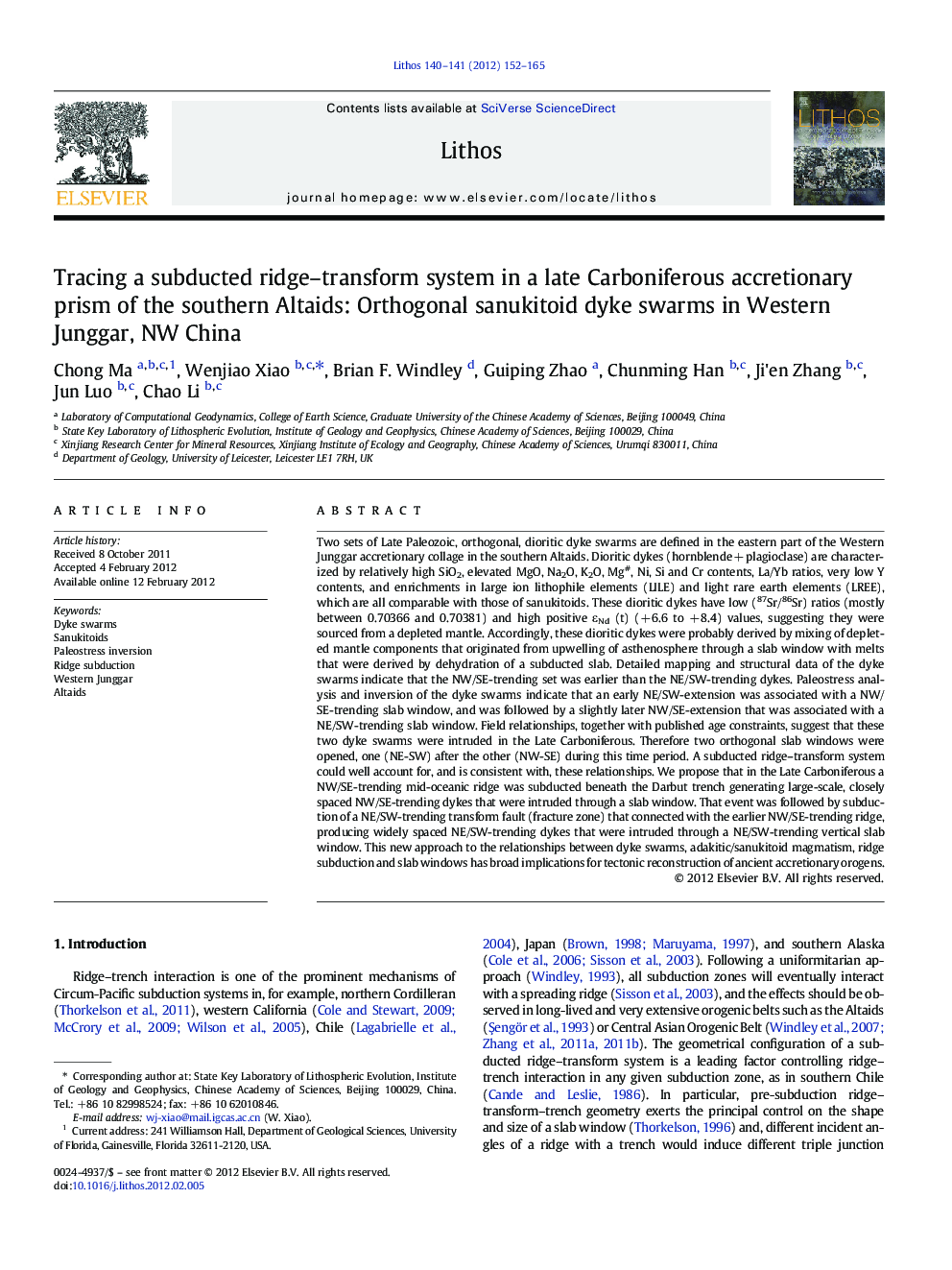| کد مقاله | کد نشریه | سال انتشار | مقاله انگلیسی | نسخه تمام متن |
|---|---|---|---|---|
| 4716623 | 1638709 | 2012 | 14 صفحه PDF | دانلود رایگان |

Two sets of Late Paleozoic, orthogonal, dioritic dyke swarms are defined in the eastern part of the Western Junggar accretionary collage in the southern Altaids. Dioritic dykes (hornblende + plagioclase) are characterized by relatively high SiO2, elevated MgO, Na2O, K2O, Mg#, Ni, Si and Cr contents, La/Yb ratios, very low Y contents, and enrichments in large ion lithophile elements (LILE) and light rare earth elements (LREE), which are all comparable with those of sanukitoids. These dioritic dykes have low (87Sr/86Sr) ratios (mostly between 0.70366 and 0.70381) and high positive εNd (t) (+ 6.6 to + 8.4) values, suggesting they were sourced from a depleted mantle. Accordingly, these dioritic dykes were probably derived by mixing of depleted mantle components that originated from upwelling of asthenosphere through a slab window with melts that were derived by dehydration of a subducted slab. Detailed mapping and structural data of the dyke swarms indicate that the NW/SE-trending set was earlier than the NE/SW-trending dykes. Paleostress analysis and inversion of the dyke swarms indicate that an early NE/SW-extension was associated with a NW/SE-trending slab window, and was followed by a slightly later NW/SE-extension that was associated with a NE/SW-trending slab window. Field relationships, together with published age constraints, suggest that these two dyke swarms were intruded in the Late Carboniferous. Therefore two orthogonal slab windows were opened, one (NE-SW) after the other (NW-SE) during this time period. A subducted ridge–transform system could well account for, and is consistent with, these relationships. We propose that in the Late Carboniferous a NW/SE-trending mid-oceanic ridge was subducted beneath the Darbut trench generating large-scale, closely spaced NW/SE-trending dykes that were intruded through a slab window. That event was followed by subduction of a NE/SW-trending transform fault (fracture zone) that connected with the earlier NW/SE-trending ridge, producing widely spaced NE/SW-trending dykes that were intruded through a NE/SW-trending vertical slab window. This new approach to the relationships between dyke swarms, adakitic/sanukitoid magmatism, ridge subduction and slab windows has broad implications for tectonic reconstruction of ancient accretionary orogens.
Figure optionsDownload as PowerPoint slideHighlights
► Right-angle sanukitoid dykes occur in late Carboniferous accretionary prism.
► Early dykes indicate early slab window, and later dykes slightly younger one.
► The mid-ocean ridge was subducted followed by transform fault.
► Ridge–transform subduction has broad implications for ancient accretionary orogens.
Journal: Lithos - Volumes 140–141, May 2012, Pages 152–165